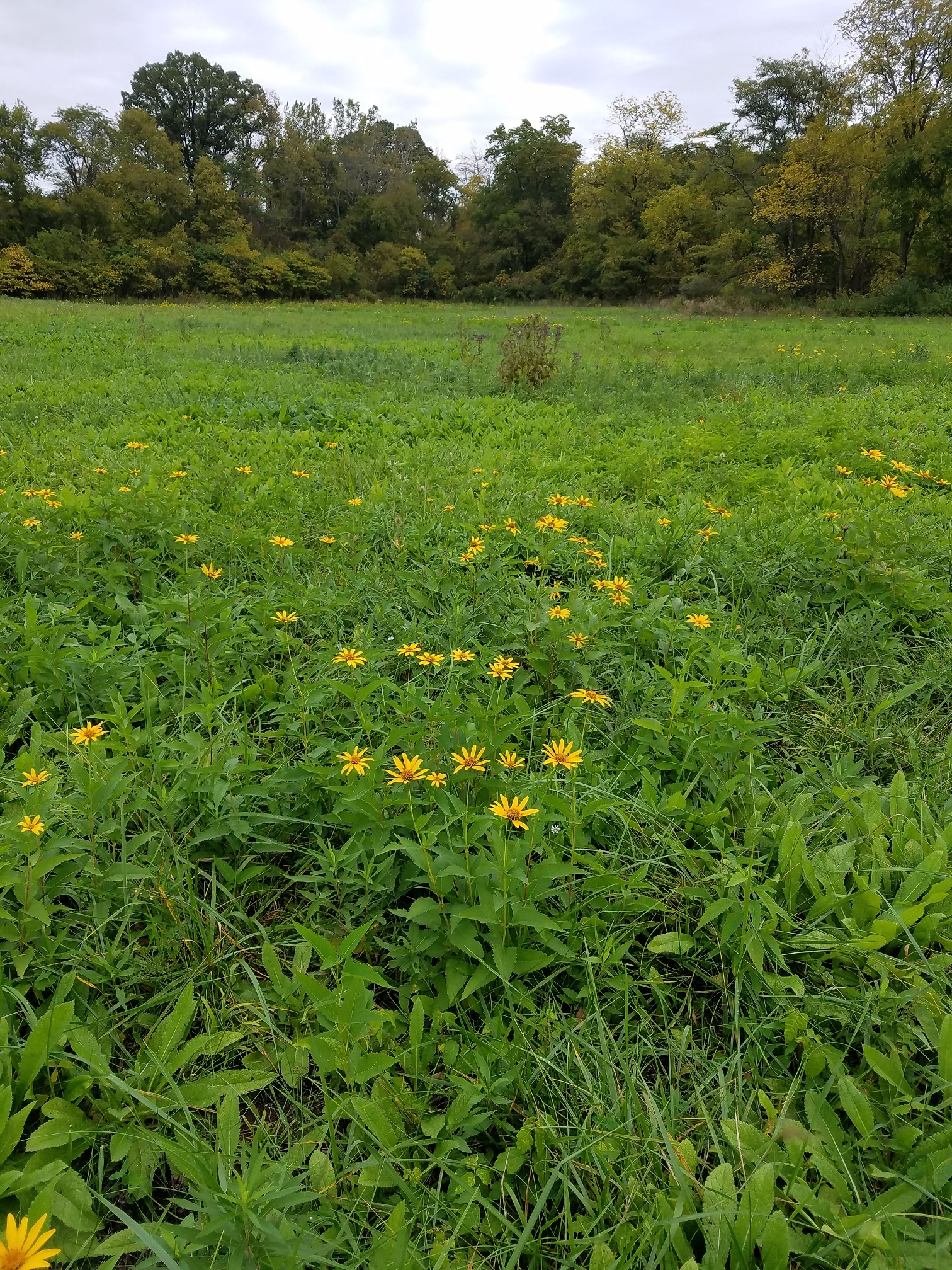 Ghosts of the Great Black Swamp are still alive in a small hayfield in Paulding County. Water sometimes rises in ancient pathways, and heavy rains bring the waters of the Marie DeLarme Creek back to old haunts in the field. A new restoration project by the Black Swamp Conservancy will resurrect these eight acres as a healthy wetland. When restored, this small project will also complete a larger plan to protect a true piece of the historical Great Black Swamp: Forrest Woods Nature Preserve.
Ghosts of the Great Black Swamp are still alive in a small hayfield in Paulding County. Water sometimes rises in ancient pathways, and heavy rains bring the waters of the Marie DeLarme Creek back to old haunts in the field. A new restoration project by the Black Swamp Conservancy will resurrect these eight acres as a healthy wetland. When restored, this small project will also complete a larger plan to protect a true piece of the historical Great Black Swamp: Forrest Woods Nature Preserve.
When the Conservancy first acquired Forrest Woods in 2003, it was about 80 acres. In the 20 years since, we have acquired land around the core acres to build a buffer, expanding the preserve to nearly 400 acres. Some of those buffer lands were not in a natural state, so in 2016 we started restoring those acres to extend habitat and useful wetlands The Marie DeLarme Creek parcel is one of the final pieces yet to be restored in the buffer, and it’s an interesting historical and hydrological space.
The creek has always been meandering in this area, which is a shallow bowl, slightly downhill from the surrounding land. The creek has wandered and re-formed for hundreds or thousands of years, digging new paths and abandoning old ones on its way to the nearby Maumee River. Because the waterways were always shifting, early farmers in the area couldn’t drain it for agriculture. There are still no field tiles in this field, although persistent farmers have squeezed out several acres for hay. The restoration project will replace agricultural grasses with native plants and trees and create vernal pools near the creek. The expected result is an improvement in habitat, reduction in erosion, and fewer excess nutrients reaching the Maumee River and eventually Lake Erie. The preliminary restoration concept is pictured below.
“In similar projects in Forrest Woods, we have seen rapid changes from simple projects like this,” said Melanie Coulter, the Conservancy’s Conservation Manager. She expects the pools and the soils around them to fill quickly from both rainwater and creek floodwaters. “We should have leopard frogs laying eggs in the pools by next spring, followed by herons looking for the frogs.” When trees and shrubs are planted, the larger trees will be sited to shade the pools. The pools will take up about two acres of land. The other six acres will be riparian woodland, with plantings of native trees and shrubs and a seeding mix of native plants.
The public can visit Forrest Woods Nature Preserve only at Forder Bridge, which is a public access point for the Maumee River Water Trail. Contact Melanie Coulter for permission to visit any other part of the preserve.


This project was financed through a grant from the United States Environmental Protection Agency through an assistance agreement with the Ohio Environmental Protection Agency. The contents and views contained in this publication are those of the authors and have not been subject to any Ohio EPA or US EPA peer or administrative review and may not necessarily reflect the views of the Ohio EPA or the US EPA and no official endorsement should be inferred.


